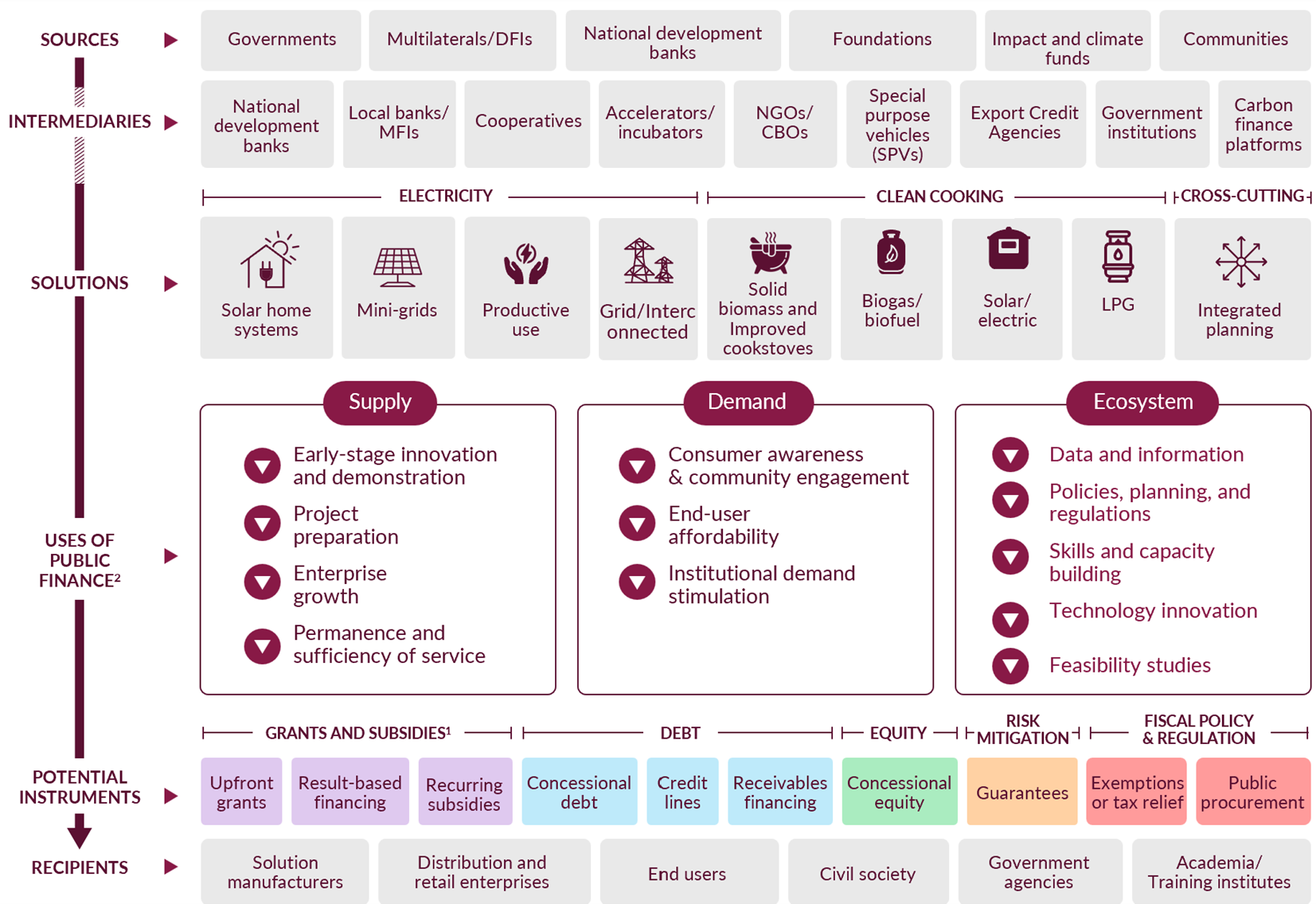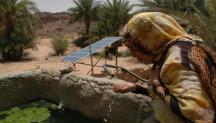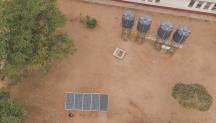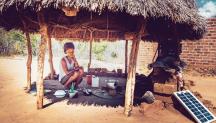

Why Public Financing Needs to Be Centre Stage for Universal Energy Access
Newsletter
The latest Tracking SDG 7 report offers yet another sobering reminder of the lack of progress on electricity and clean cooking targets. In 2021, over 675 million people were living without electricity access, and billions more were without reliable access. Meanwhile, about 2.3 billion people rely on traditional fuels for cooking. Under a business-as-usual scenario, by 2030, 660 million and 1.9 billion people, respectively, are still expected to be without electricity and clean cooking access. Although investments in energy access solutions have grown in recent years, they are nowhere near sufficient.
The International Renewable Energy Agency (IRENA)’s analysis finds that between 2010 and 2021, the decentralised renewable energy (DRE) sector attracted more than USD 3 billion in stand-alone systems and mini-grids. In 2021, nearly 180 million people gained some form of electricity access through DRE solutions. However, the funding represents less than 1 per cent of the overall investments committed to electricity access. Clean cooking investments are also lagging; needing to more than triple annually from the current USD 2.5 billion to USD 8 billion by 2030.
This is an unacceptable scenario, putting at risk the climate and sustainable development goals, and calls for an accelerated just and inclusive energy transition. The stakes are even higher as we reach the halfway point for achieving Sustainable Development Goals (SDGs) by 2030. At the SDG Summit taking place this week in New York, leaders discuss ways to accelerate efforts to deliver on the goals of universal access to electricity and clean cooking, among others. During the SDG Summit Action Weekend, a high-level session highlighted the critical need for action to finance just, inclusive and equitable energy transitions.
Moving the needle on SDG 7 target on universal access to affordable, reliable, sustainable, and modern energy requires a systemic change in terms of planning, policies and regulations, as well as financing. Private capital will have an important role to play in bridging the significant investment gap, but the multi-faceted role of public financing should not be ignored.
Beyond catalysing private capital: recognising the important role of public financing
Energy access markets usually see a combination of technology solutions catering to different end-user needs. In the case of electricity access, countries increasingly see solar lights, home systems, mini-grids, and productive-use appliances being adopted in tandem. With differing economics and delivery models at play, financing needs can vary greatly for each solution, requiring a holistic approach to planning, estimating, and deploying public financing.
A mix of financing instruments is, therefore, necessary to meet the different needs at different levels; supply (solutions providers), demand (end-users) and the ecosystem. In the case of renewable energy mini-grids, for instance, there is a growing recognition that results-based financing instruments need to be coupled with efforts to improve access to patient equity, as well as long-term and affordable local-currency debt. This, in turn, will support the sector's viability and enable increased participation of local enterprises in the sector.
Public financing is also needed to bridge the affordability gaps through demand-side interventions, particularly in last-mile access and low-income contexts, to drive a just and inclusive energy transition that leaves no one behind. Concessional consumer financing can help bridge these gaps, but it requires a strong local ecosystem of intermediaries before they can be scaled-up.
Committing greater public financing to support a range of critical public goods at an ecosystem-level is also necessary. This includes investing in skills building, policy and planning, technology innovation, complementary infrastructure development, bridging data and information gaps, awareness raising, community engagement, and productive use development.
A framework to map and assess public finance flows at the national level
Despite the crucial role of public financing in achieving SDG 7, its tracking remains limited. The majority of efforts presently involve tracking enterprise-level transactions in the sector, globally or regionally-aggregated commitments (not disbursements).
To ensure that public financing commitments from different national and international sources are aligned with the needs of targeted recipients, it is important to closely analyse existing flows. For this purpose, IRENA, with the support of Dalberg Advisors, introduced a holistic framework that can assist decision-makers to map the public financing needs across the energy access ecosystem; to understand stakeholders’ preferences for the various public finance instruments; and to assess existing public finance flows to identify gaps for interventions.
Holistic framework for structuring public financing for energy access*

National integrated energy access plans increasingly include an investment prospectus outlining the financing needed across solutions. It is important to assess public financing needs across the energy access ecosystem to be able to ensure that the total number of commitments from governments and development partners add up to the needed flows. Rather than being centred on what funders are offering, a bottom-up assessment is also necessary to address the gaps in instruments and the financing terms available.
The choice of design and stability of instruments strongly influences the sustainability and permanence of products and services. Upfront capital subsidies alone, for instance, may catalyse the adoption of products, but may negatively impact long-term market development, especially if budget outlays and public funding flows remain unpredictable. Meanwhile, for mini-grid and grid-based electrification solutions, ongoing tariff-based support will almost certainly require long-term public financing commitments to bridge the gap between approved tariffs and cost-of-service.
Applying the framework to country case studies offers the opportunity to undertake an in-depth assessment of public financing needs and preferred instruments for the various electricity and clean cooking solutions. What is already clear is that public financing commitments and disbursements from governments, multilaterals, national development banks, climate funds and other sources need to be scaled-up significantly. This framework can identify priorities and guide investments where they are needed the most.
*The framework is presented and discussed in the IRENA report Global landscape of renewable energy finance 2023. A detailed analysis is under development and will be available shortly.

Expert Insight by:
Divyam Nagpal
Programme Officer - Energy Access, IRENA
© IRENA 2025
Unless otherwise stated, material in this article may be freely used, shared, copied, reproduced, printed and/or stored, provided that appropriate acknowledgement is given of the author(s) as the source and IRENA as copyright holder.
The findings, interpretations and conclusions expressed herein are those of the author(s) and do not necessarily reflect the opinions of IRENA or all its Members. IRENA does not assume responsibility for the content of this work or guarantee the accuracy of the data included herein. Neither IRENA nor any of its officials, agents, data or other third-party content providers provide a warranty of any kind, either expressed or implied, and they accept no responsibility or liability for any consequence of use of the content or material herein. The mention of specific companies, projects or products does not imply that they are endorsed or recommended, either by IRENA or the author(s). The designations employed and the presentation of material herein do not imply the expression of any opinion on the part of IRENA or the author(s) concerning the legal status of any region, country, territory, city or area or of its authorities, or concerning the delimitation of frontiers or boundaries.




